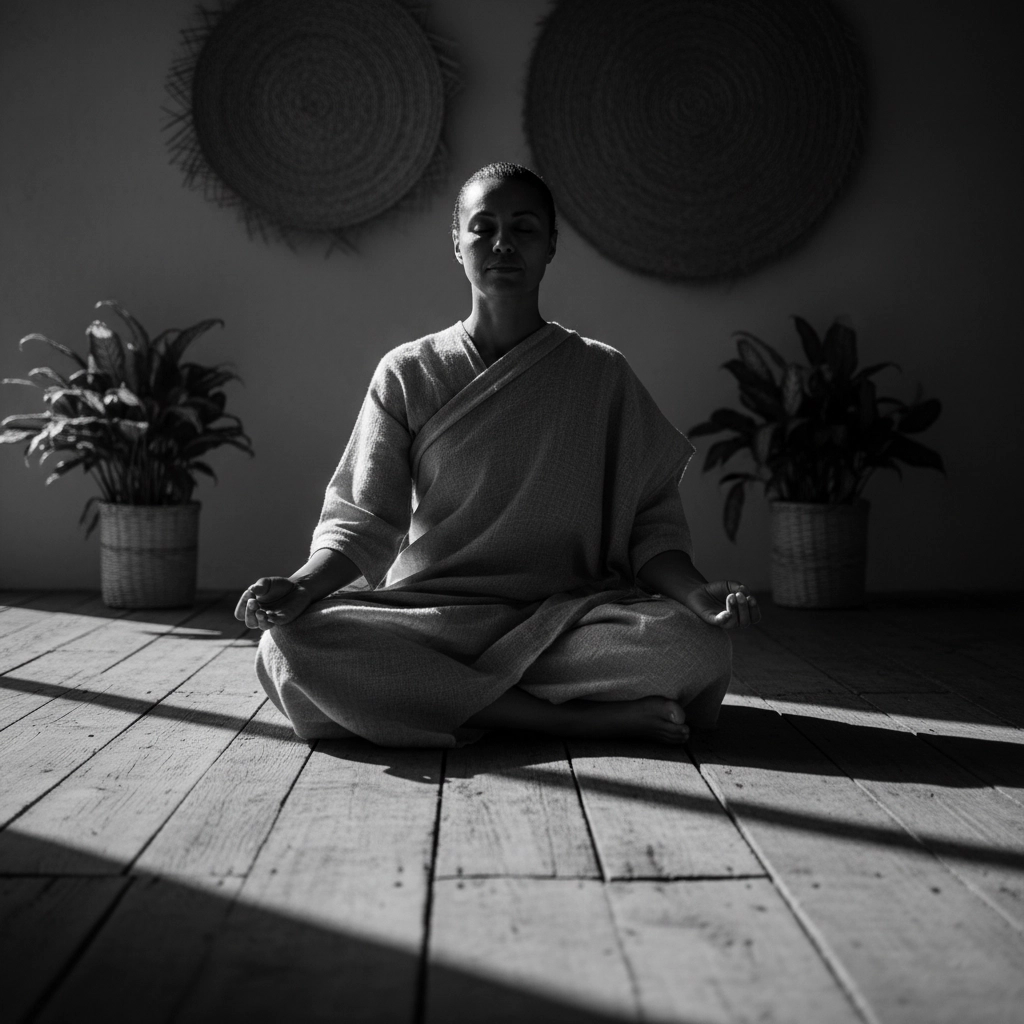Life feels like it's moving at warp speed these days, doesn't it? Between work deadlines, family responsibilities, endless notifications, and that never-ending to-do list, finding a moment of peace can seem impossible. But here's the thing: mindfulness isn't about escaping the chaos; it's about finding your center right in the middle of it.
Mindfulness is simply the practice of being present in the moment, aware of where you are and what you're doing, without being overwhelmed by what's happening around you. Think of it as your mental reset button, always available when you need it most.
Starting Your Day with Intention
The way you begin your morning sets the tone for everything that follows. Instead of immediately reaching for your phone or rushing into your daily routine, try creating a mindful morning ritual that grounds you before the world demands your attention.
Begin with a few deep breaths while you're still in bed. Feel your body against the mattress, notice the temperature of the air, and simply acknowledge that you're awake and ready to meet the day. This simple practice takes less than two minutes but creates a foundation of awareness that carries forward.

When you make your morning coffee, transform it into a mindful experience. As you prepare your Italian Roast Coffee, pay attention to the rich aroma filling your kitchen, the sound of water heating, and the anticipation of that first satisfying sip. Let this daily ritual become an anchor point: a moment where you pause, breathe, and set a positive intention for your day.
Core Mindfulness Techniques That Actually Work
The 4-7-8 Breathing Technique
When stress hits hard, your breath is your most powerful tool. Try this simple pattern: breathe in quietly through your nose for 4 counts, hold your breath for 7 counts, then exhale completely through your mouth for 8 counts. Repeat this cycle four times. This technique activates your body's natural relaxation response and can instantly calm your nervous system.
Body Scan Meditation
This practice helps you reconnect with your physical self, especially when your mind is racing. Starting from the top of your head, slowly move your attention down through your body: your forehead, eyes, jaw, neck, shoulders, and so on. Notice any areas of tension without trying to fix them. Simply acknowledging these sensations helps release built-up stress.

The Five Senses Grounding Exercise
When you feel overwhelmed or disconnected, use your senses to anchor yourself in the present moment. Name five things you can see, four things you can hear, three things you can touch, two things you can smell, and one thing you can taste. This technique immediately brings your attention back to the here and now.
Weaving Mindfulness Into Your Daily Activities
The beauty of mindfulness is that you don't need extra time in your schedule: you can practice it during activities you're already doing.
Mindful Eating
Transform your meals from rushed necessities into nourishing experiences. Before eating, take three deep breaths. Notice the colors, textures, and smells of your food. Chew slowly and really taste what you're eating. This practice not only reduces stress but also helps you enjoy your food more and tune into your body's hunger and fullness cues.
Walking Meditation
Whether you're walking to your car, through the grocery store, or around your neighborhood, use these moments for mindfulness. Feel your feet connecting with the ground, notice your breathing rhythm, and observe your surroundings without judgment. Walking meditation transforms ordinary movement into a calming, centering practice.

Mindful Listening
During conversations, practice truly listening instead of planning what you'll say next. Pay attention to the speaker's words, tone, and body language. This not only improves your relationships but also keeps you present and engaged rather than lost in your own thoughts.
Quick Relief Techniques for Stressful Moments
Life doesn't always give us the luxury of a 20-minute meditation session. Sometimes you need immediate relief, and these techniques deliver fast results.
The STOP Method
When you feel stress building, remember STOP:
- Stop what you're doing
- Take three deep breaths
- Observe your thoughts and feelings without judgment
- Proceed with awareness and intention
This entire process takes less than a minute but can completely shift your mental state.
Mindful Hand Washing
Turn this routine activity into a reset moment. Feel the water temperature, notice the sensation of soap on your skin, and focus on the circular motions. This simple practice can wash away stress along with germs.

The 3-3-3 Rule
When anxiety strikes, name three things you can see, three sounds you can hear, and move three parts of your body. This technique interrupts anxious thoughts and brings you back to the present moment.
Building Sustainable Mindfulness Habits
The key to lasting change isn't perfection: it's consistency. Start small and build gradually.
Mindful Transitions
Use the moments between activities as mini-meditation opportunities. Before checking email, take three conscious breaths. When you get in your car, pause for a moment before starting the engine. These transition moments help you stay centered throughout the day.
Evening Reflection
End your day by reflecting on three good things that happened, no matter how small. This practice trains your brain to notice positive moments and creates a sense of gratitude that promotes better sleep and overall well-being.
Technology Boundaries
Create mindful spaces in your day by establishing phone-free zones or times. Use your morning coffee time, meals, or the hour before bed as opportunities to disconnect from digital distractions and reconnect with yourself.

Making It Work in Real Life
Remember, mindfulness isn't about being calm and peaceful all the time: that's unrealistic and frankly, not the goal. It's about developing the ability to notice when you're stressed, overwhelmed, or distracted, and having tools to respond rather than react.
Some days you'll remember to practice mindfulness throughout the day. Other days, you might only manage one conscious breath before bed. Both are perfectly fine. The practice is called "practice" for a reason: it's not about perfection.
Start with just one technique that resonates with you. Maybe it's mindful coffee brewing in the morning, or taking three deep breaths before each meeting. Once that feels natural, add another technique. Building mindfulness is like strengthening a muscle: it gets easier and more natural with time.
The chaos of modern life isn't going anywhere, but your ability to find clarity within it can transform how you experience each day. You already have everything you need to begin: your breath, your awareness, and the willingness to start exactly where you are right now.
Mindfulness isn't about adding more to your already full plate; it's about bringing more presence and intention to what you're already doing. In a world that profits from your distraction, choosing to be present is a radical act of self-care.




